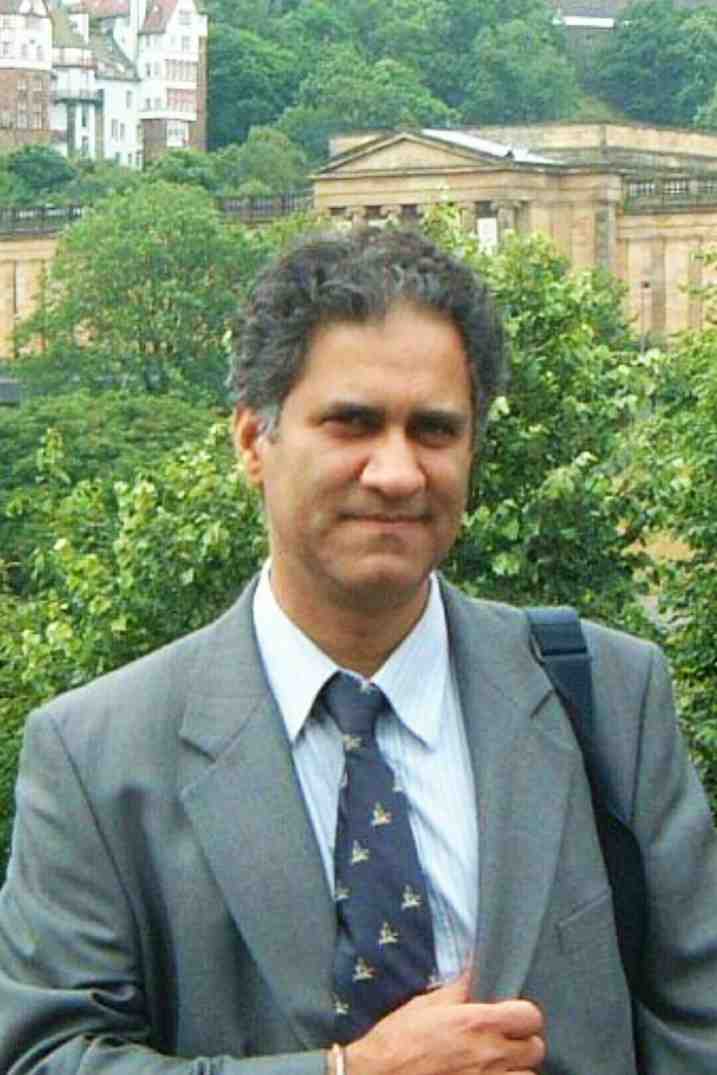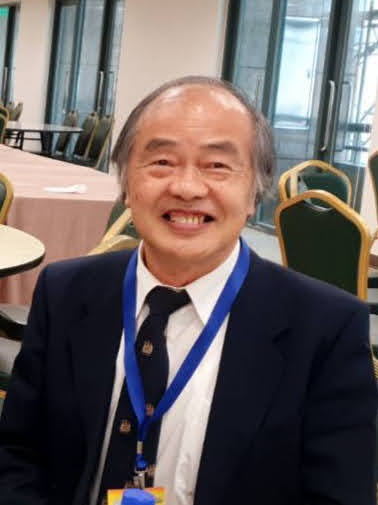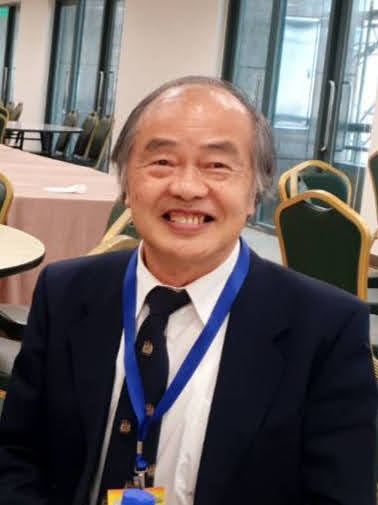AUCTORES
Globalize your Research
Review ariticle | DOI: https://doi.org/10.31579/2690-1919/521
Department of Otorhinolaryngology, Head and Neck Surgery; Saarland University, Homburg, Germany.
*Corresponding Author: Silke Wemmert, Department of Otorhinolaryngology Kirrberger Strasse 10066421 Homburg, Germany.
Citation: Bernhard Schick, Lukas Pillong, and Silke Wemmert, (2025), The Embryological Basis of Juvenile Angiofibroma: A Unifying Hypothesis for Tumor Pathogenesis, J Clinical Research and Reports, 19(5); DOI:10.31579/2690-1919/521
Copyright: © 2025, Silke Wemmert. This is an open access article distributed under the Creative Commons Attribution License, which permits unrestricted use, distribution, and reproduction in any medium, provided the original work is properly cited.
Received: 24 March 2025 | Accepted: 08 April 2025 | Published: 30 May 2025
Keywords: juvenile angiofibroma; embryology; first branchial arch; neural crest cell; LH/LHR; epithelial-mesenchymal transition
Juvenile angiofibroma (JA) is a rare tumor, primarily affecting adolescent males, with an unclear etiology. This study reviews clinical and molecular data to assess an embryological hypothesis explaining JA's key features: its origin near the sphenopalatine foramen, vascular supply from the maxillary artery, sex-specific incidence, and fibrovascular composition. Findings support the hypothesis that JA arises from remnants of the first branchial arch plexus and persisting neural crest cells, which accounts for its location, blood supply, and growth. The hormonal surge during puberty, acting via the luteinizing hormone receptor, likely triggers tumor development. Epithelial-mesenchymal transition (EMT) is involved in its fibrous component. This hypothesis integrates JA's clinical, histopathological, and rare variant characteristics, suggesting an embryologically derived pathology.
Juvenile angiofibroma (JA) is a rare yet fascinating fibrovascular tumor defined by four distinct features: [1] an origin near the sphenopalatine foramen, [2] a primary blood supply from the maxillary/sphenopalatine artery with potential additional feeders from the internal carotid artery, [3] an almost exclusive manifestation in male adolescents, and [4] a fibrovascular architecture characterized by irregular vascular spaces - often lined solely by endothelial cells - embedded within a fibrous stroma (Schick & Kahle, 2000). These unique characteristics have spurred numerous theories regarding the tumor’s nature since the 19th century (Schick & Urbschat, 2004). However, most of these hypotheses have focused on only one aspect of JA, thereby neglecting the full spectrum of its features and ultimately failing to achieve general acceptance.
Historically, many proposed theories have concentrated on either the vascular or fibrous components of JA. This piecemeal approach risks an incomplete understanding of the tumor’s etiology, as it overlooks the interplay between both tissue components. In parallel, extensive genetic and molecular investigations - such as the frequent detection of beta-catenin mutations in JA - have identified various alterations without providing decisive insights into tumor etiology (Abraham et al., 2001; Calanca et al., 2021; Schick et al., 2011).
Moreover, these genetic and molecular studies have not identified a definitive tumor cell of origin, a crucial step for establishing a convincing etiological model. The absence of a clear explanation for the tumor’s almost exclusive occurrence in adolescent males further underscores the limitations of previous approaches; hormone studies, for instance, have yielded conflicting results (Kumagami, 1993; Liu et al., 2015; Schick et al., 2014).
In response to these challenges, a strong impetus is to adopt a unifying theory of JA nature. Here, we present an embryological perspective that, for the first time, simultaneously accounts for all four characteristic features of JA. This model integrates the vascular and fibrous elements of the tumor and offers a comprehensive explanation for its pathogenesis, thus holding the promise of achieving general acceptance.
Start of Embryological Thoughts in JAs
Two key developments initiated the embryological perspective on juvenile angiofibroma:
First Branchial Arch Artery
The first branchial arch artery is transiently present during embryonic development (days 22 to 24). It provides the essential blood supply to the developing brain during this period, while the later needed arteries are not yet fully established (Bertulli & Robert, 2021; Schick & Urbschat, 2004). Notably, the first branchial arch artery forms a temporary connection between the tissues surrounding the future sphenopalatine foramen and the segment of the internal carotid artery from which internal carotid feeders in JA are sometimes observed. As development proceeds, this artery regresses via the formation of a vascular plexus, with remnants of this plexus subsequently being incorporated into the arteries around the sphenopalatine foramen (Schick & Urbschat, 2004). Figure 1 a-d illustrates the normal development of the first branchial arch artery, along with the potential remnants of its plexus.
Previous findings have further illuminated the presence of exclusively endothelial-lined vascular spaces in fetal tissues adjacent to the sphenopalatine foramen in both sexes (Harrison, 1987). These spaces are hypothesized to represent regression remnants of the first branchial arch artery plexus, which may, in rare instances, persist and provide the anatomical basis for later JA development.
Verification of Embryological Tissue
Based on the embryological hypothesis, specific markers indicative of an embryological origin should be detectable in JA tissues. Molecular analyses have primarily focused on the pathological JA vessels. Notably, laminin alpha2 expression was identified in these vessels (Starlinger et al., 2007), a marker typically expressed in embryonic vessels associated with the brain. This finding strongly supports the embryological origin hypothesis for JA. Additionally, an embryological collagen I texture has been observed in the fibrous component of JA (Gramann et al., 2009), further reinforcing this notion.
Moreover, the detection of TSHZ1 in JA vessels (Schick et al., 2011) has provided additional support for the involvement of the first branchial arch artery in JA pathogenesis. TSHZ1 is known to play a role in the formation of the first and second branchial arch arteries in mice (Coré et al., 2007), thereby renewing interest in its potential role in JA.
Cell of Tumor Origin
For many years, attempts to define the tumor cell of origin in JA have been unsuccessful. The embryological hypothesis offers a new perspective, guided by two key considerations: a) the persistence of neural crest cells in pathologies of embryological origin, and b) the critical role of neural crest cells in vascular development (Ponzoni et al., 2022; Schussler et al., 2021).
A particularly compelling observation is the consistent detection of CD271-positive cells in all examined JA samples, localized near the irregular vascular structures. These CD271-positive cells were interpreted as persisting neural crest cells, further supporting the concept that JA originates from embryological remnants (Schick et al., 2022).
Tumor Initiation
The almost exclusive manifestation of JA in adolescent males has long suggested a hormonal influence in its initiation. Initial studies, however, did not find altered hormone levels in affected individuals (Kumagami, 1993). Consequently, research shifted to investigating hormone receptors -primarily androgen, estrogen, and progesterone receptors (Liu et al., 2015; Schick et al., 2014). Yet, these studies yielded contradictory results, leaving the explanation for the tumor’s sex specificity unresolved.
The subsequent detection of luteinizing hormone receptor (LHR) mRNA in JA (Schick et al., 2014) expanded the perspective. Although LHR expression is typically limited to a few tissues, its presence in JA was striking. A closer examination revealed that the pubertal surge in luteinizing hormone (LH) - which marks the onset of puberty - could serve as a potent stimulus for tumor growth in male adolescents. Further investigations visualizing both LHR mRNA and protein in JA tissue sections consistently demonstrated LHR expression in proximity to the pathological vessels (Wemmert et al., 2024), supporting the hypothesis that the pubertal LH surge plays a critical role in JA initiation (Figure 1e).
Fibrovascular Tissue Architecture
The distinctive fibrovascular architecture of JA demands an explanation that integrates both its vascular and fibrous components. Within the context of an embryological vascular origin, the process of epithelial-to-mesenchymal transition (EMT) - a key embryological mechanism - emerges as a compelling candidate (Ang et al., 2023; Calanca et al., 2021; Serrano-Gomez et al., 2016). EMT provides a plausible mechanism by which the vascular component transitions into the fibrous tissue observed in JA (Figure 1g). This hypothesis is further supported by the expression of EMT-associated markers such as MMP3, PDGFRβ, NG2, and vimentin (Boewe et al., 2022; Schick et al., 2022), as well as transcription factors like Snail and Twist (own unpublished data).

Figure 1: Embryological explanation for the characteristic vascular and fibrous features of JA. The first branchial arch artery ensures in embryology between day 22 and 24 blood supply for the developing brain in a still not completely developed internal carotid artery (a). The only temporarily present first branchial arch artery recedes via plexus formation in further development (b). The plexus remnants are found along the first branchial arch artery (c). Finally, they are only observed close to the area of the later sphenopalatine foramen (d) and incorporated partially into the arising vessels in this region. LHR-expressing remnants of the first branchial arch artery plexus are sensitive to an LH increase during puberty (e), resulting in vascular growth at this time (f) and tumor occurrence. Fibrous tissue arises (yellow) from the vascular component of the tumor by epithelial-mesenchymal transition (EMT)(g).
Tumor Localization
The endonasal approach is highly effective for resecting JA because it provides direct access to the sphenopalatine foramen and the altered vascular structures in this region. Complete tumor removal should include potential plexus remnants near the sphenoid foramen, the pterygoid plate, and the basissphenoid, thereby reducing the risk of recurrence (Howard et al., 2001).
Vascular Supply
In regard to JA embryological origin, it is essential to perform comprehensive angiographic evaluations of both the external and internal carotid arteries. Such assessments help to delineate the entire tumor blood supply and are critical in avoiding cerebral complications during embolization procedures. Moreover, the embryological perspective may also account for scarce, atypical JA locations (Windfuhr & Vent, 2018) where persistent vascular structures, akin to first branchial arch artery remnants, might be the origin.
Sex Specificity
The proposed involvement of LH in JA initiation not only explains the tumor’s prevalence in adolescent males but also provides insight into its occasional occurrence in early childhood (Newman et al., 2023). Known minor LH peak during early childhood could stimulate sensitive vascular remnants leading to JA formation. Additionally, clinical observations indicate that anti-androgen therapy results in some tumor shrinkage in post-pubertal patients but not during puberty at the time of elevated LH levels, supporting the idea that LH is the dominant hormonal driver during puberty.
Fibrovascular Tissue
Histological analyses of JA reveal a transition from densely vascularized areas beneath a pseudo-capsule to regions dominated by fibrous tissue - a pattern consistent with EMT. This observation substantiates the clinical recommendation to avoid biopsies (due to the risk of abundant bleeding) and instead perform resection along the pseudo-capsule. In some cases, tumor involution may occur if the vascular remnants cease proliferating (Tosun et al., 2008), which aligns with the proposed EMT-based mechanisms.
Embryological JA Nature
The embryological hypothesis for JA is robustly supported by multiple lines of evidence that collectively address its unique features. The detection of persisting neural crest cells and TSHZ1 in JA tissues (Schick et al., 2022; Schick et al., 2011) strongly supports the notion that the tumor arises from remnants of the first branchial arch plexus, thereby explaining its site of origin and characteristic blood supply. Furthermore, the identification of LHR in JA provides a plausible explanation for the near-exclusive manifestation in adolescent males, correlating with the pubertal LH surge (Schick et al., 2014; Wemmert et al., 2024). Finally, the transformation of vascular tissue into fibrous tissue via EMT accounts for the tumor’s dual histological components. Together, these findings offer a comprehensive and unifying explanation for JA pathogenesis. Basically, the embryological model “takes it all.”
The authors declare no conflicts of interest.
Clearly Auctoresonline and particularly Psychology and Mental Health Care Journal is dedicated to improving health care services for individuals and populations. The editorial boards' ability to efficiently recognize and share the global importance of health literacy with a variety of stakeholders. Auctoresonline publishing platform can be used to facilitate of optimal client-based services and should be added to health care professionals' repertoire of evidence-based health care resources.

Journal of Clinical Cardiology and Cardiovascular Intervention The submission and review process was adequate. However I think that the publication total value should have been enlightened in early fases. Thank you for all.

Journal of Women Health Care and Issues By the present mail, I want to say thank to you and tour colleagues for facilitating my published article. Specially thank you for the peer review process, support from the editorial office. I appreciate positively the quality of your journal.
Journal of Clinical Research and Reports I would be very delighted to submit my testimonial regarding the reviewer board and the editorial office. The reviewer board were accurate and helpful regarding any modifications for my manuscript. And the editorial office were very helpful and supportive in contacting and monitoring with any update and offering help. It was my pleasure to contribute with your promising Journal and I am looking forward for more collaboration.

We would like to thank the Journal of Thoracic Disease and Cardiothoracic Surgery because of the services they provided us for our articles. The peer-review process was done in a very excellent time manner, and the opinions of the reviewers helped us to improve our manuscript further. The editorial office had an outstanding correspondence with us and guided us in many ways. During a hard time of the pandemic that is affecting every one of us tremendously, the editorial office helped us make everything easier for publishing scientific work. Hope for a more scientific relationship with your Journal.

The peer-review process which consisted high quality queries on the paper. I did answer six reviewers’ questions and comments before the paper was accepted. The support from the editorial office is excellent.

Journal of Neuroscience and Neurological Surgery. I had the experience of publishing a research article recently. The whole process was simple from submission to publication. The reviewers made specific and valuable recommendations and corrections that improved the quality of my publication. I strongly recommend this Journal.

Dr. Katarzyna Byczkowska My testimonial covering: "The peer review process is quick and effective. The support from the editorial office is very professional and friendly. Quality of the Clinical Cardiology and Cardiovascular Interventions is scientific and publishes ground-breaking research on cardiology that is useful for other professionals in the field.

Thank you most sincerely, with regard to the support you have given in relation to the reviewing process and the processing of my article entitled "Large Cell Neuroendocrine Carcinoma of The Prostate Gland: A Review and Update" for publication in your esteemed Journal, Journal of Cancer Research and Cellular Therapeutics". The editorial team has been very supportive.

Testimony of Journal of Clinical Otorhinolaryngology: work with your Reviews has been a educational and constructive experience. The editorial office were very helpful and supportive. It was a pleasure to contribute to your Journal.

Dr. Bernard Terkimbi Utoo, I am happy to publish my scientific work in Journal of Women Health Care and Issues (JWHCI). The manuscript submission was seamless and peer review process was top notch. I was amazed that 4 reviewers worked on the manuscript which made it a highly technical, standard and excellent quality paper. I appreciate the format and consideration for the APC as well as the speed of publication. It is my pleasure to continue with this scientific relationship with the esteem JWHCI.

This is an acknowledgment for peer reviewers, editorial board of Journal of Clinical Research and Reports. They show a lot of consideration for us as publishers for our research article “Evaluation of the different factors associated with side effects of COVID-19 vaccination on medical students, Mutah university, Al-Karak, Jordan”, in a very professional and easy way. This journal is one of outstanding medical journal.
Dear Hao Jiang, to Journal of Nutrition and Food Processing We greatly appreciate the efficient, professional and rapid processing of our paper by your team. If there is anything else we should do, please do not hesitate to let us know. On behalf of my co-authors, we would like to express our great appreciation to editor and reviewers.

As an author who has recently published in the journal "Brain and Neurological Disorders". I am delighted to provide a testimonial on the peer review process, editorial office support, and the overall quality of the journal. The peer review process at Brain and Neurological Disorders is rigorous and meticulous, ensuring that only high-quality, evidence-based research is published. The reviewers are experts in their fields, and their comments and suggestions were constructive and helped improve the quality of my manuscript. The review process was timely and efficient, with clear communication from the editorial office at each stage. The support from the editorial office was exceptional throughout the entire process. The editorial staff was responsive, professional, and always willing to help. They provided valuable guidance on formatting, structure, and ethical considerations, making the submission process seamless. Moreover, they kept me informed about the status of my manuscript and provided timely updates, which made the process less stressful. The journal Brain and Neurological Disorders is of the highest quality, with a strong focus on publishing cutting-edge research in the field of neurology. The articles published in this journal are well-researched, rigorously peer-reviewed, and written by experts in the field. The journal maintains high standards, ensuring that readers are provided with the most up-to-date and reliable information on brain and neurological disorders. In conclusion, I had a wonderful experience publishing in Brain and Neurological Disorders. The peer review process was thorough, the editorial office provided exceptional support, and the journal's quality is second to none. I would highly recommend this journal to any researcher working in the field of neurology and brain disorders.

Dear Agrippa Hilda, Journal of Neuroscience and Neurological Surgery, Editorial Coordinator, I trust this message finds you well. I want to extend my appreciation for considering my article for publication in your esteemed journal. I am pleased to provide a testimonial regarding the peer review process and the support received from your editorial office. The peer review process for my paper was carried out in a highly professional and thorough manner. The feedback and comments provided by the authors were constructive and very useful in improving the quality of the manuscript. This rigorous assessment process undoubtedly contributes to the high standards maintained by your journal.

International Journal of Clinical Case Reports and Reviews. I strongly recommend to consider submitting your work to this high-quality journal. The support and availability of the Editorial staff is outstanding and the review process was both efficient and rigorous.

Thank you very much for publishing my Research Article titled “Comparing Treatment Outcome Of Allergic Rhinitis Patients After Using Fluticasone Nasal Spray And Nasal Douching" in the Journal of Clinical Otorhinolaryngology. As Medical Professionals we are immensely benefited from study of various informative Articles and Papers published in this high quality Journal. I look forward to enriching my knowledge by regular study of the Journal and contribute my future work in the field of ENT through the Journal for use by the medical fraternity. The support from the Editorial office was excellent and very prompt. I also welcome the comments received from the readers of my Research Article.

Dear Erica Kelsey, Editorial Coordinator of Cancer Research and Cellular Therapeutics Our team is very satisfied with the processing of our paper by your journal. That was fast, efficient, rigorous, but without unnecessary complications. We appreciated the very short time between the submission of the paper and its publication on line on your site.

I am very glad to say that the peer review process is very successful and fast and support from the Editorial Office. Therefore, I would like to continue our scientific relationship for a long time. And I especially thank you for your kindly attention towards my article. Have a good day!

"We recently published an article entitled “Influence of beta-Cyclodextrins upon the Degradation of Carbofuran Derivatives under Alkaline Conditions" in the Journal of “Pesticides and Biofertilizers” to show that the cyclodextrins protect the carbamates increasing their half-life time in the presence of basic conditions This will be very helpful to understand carbofuran behaviour in the analytical, agro-environmental and food areas. We greatly appreciated the interaction with the editor and the editorial team; we were particularly well accompanied during the course of the revision process, since all various steps towards publication were short and without delay".

I would like to express my gratitude towards you process of article review and submission. I found this to be very fair and expedient. Your follow up has been excellent. I have many publications in national and international journal and your process has been one of the best so far. Keep up the great work.

We are grateful for this opportunity to provide a glowing recommendation to the Journal of Psychiatry and Psychotherapy. We found that the editorial team were very supportive, helpful, kept us abreast of timelines and over all very professional in nature. The peer review process was rigorous, efficient and constructive that really enhanced our article submission. The experience with this journal remains one of our best ever and we look forward to providing future submissions in the near future.

I am very pleased to serve as EBM of the journal, I hope many years of my experience in stem cells can help the journal from one way or another. As we know, stem cells hold great potential for regenerative medicine, which are mostly used to promote the repair response of diseased, dysfunctional or injured tissue using stem cells or their derivatives. I think Stem Cell Research and Therapeutics International is a great platform to publish and share the understanding towards the biology and translational or clinical application of stem cells.

I would like to give my testimony in the support I have got by the peer review process and to support the editorial office where they were of asset to support young author like me to be encouraged to publish their work in your respected journal and globalize and share knowledge across the globe. I really give my great gratitude to your journal and the peer review including the editorial office.

I am delighted to publish our manuscript entitled "A Perspective on Cocaine Induced Stroke - Its Mechanisms and Management" in the Journal of Neuroscience and Neurological Surgery. The peer review process, support from the editorial office, and quality of the journal are excellent. The manuscripts published are of high quality and of excellent scientific value. I recommend this journal very much to colleagues.

Dr.Tania Muñoz, My experience as researcher and author of a review article in The Journal Clinical Cardiology and Interventions has been very enriching and stimulating. The editorial team is excellent, performs its work with absolute responsibility and delivery. They are proactive, dynamic and receptive to all proposals. Supporting at all times the vast universe of authors who choose them as an option for publication. The team of review specialists, members of the editorial board, are brilliant professionals, with remarkable performance in medical research and scientific methodology. Together they form a frontline team that consolidates the JCCI as a magnificent option for the publication and review of high-level medical articles and broad collective interest. I am honored to be able to share my review article and open to receive all your comments.

“The peer review process of JPMHC is quick and effective. Authors are benefited by good and professional reviewers with huge experience in the field of psychology and mental health. The support from the editorial office is very professional. People to contact to are friendly and happy to help and assist any query authors might have. Quality of the Journal is scientific and publishes ground-breaking research on mental health that is useful for other professionals in the field”.

Dear editorial department: On behalf of our team, I hereby certify the reliability and superiority of the International Journal of Clinical Case Reports and Reviews in the peer review process, editorial support, and journal quality. Firstly, the peer review process of the International Journal of Clinical Case Reports and Reviews is rigorous, fair, transparent, fast, and of high quality. The editorial department invites experts from relevant fields as anonymous reviewers to review all submitted manuscripts. These experts have rich academic backgrounds and experience, and can accurately evaluate the academic quality, originality, and suitability of manuscripts. The editorial department is committed to ensuring the rigor of the peer review process, while also making every effort to ensure a fast review cycle to meet the needs of authors and the academic community. Secondly, the editorial team of the International Journal of Clinical Case Reports and Reviews is composed of a group of senior scholars and professionals with rich experience and professional knowledge in related fields. The editorial department is committed to assisting authors in improving their manuscripts, ensuring their academic accuracy, clarity, and completeness. Editors actively collaborate with authors, providing useful suggestions and feedback to promote the improvement and development of the manuscript. We believe that the support of the editorial department is one of the key factors in ensuring the quality of the journal. Finally, the International Journal of Clinical Case Reports and Reviews is renowned for its high- quality articles and strict academic standards. The editorial department is committed to publishing innovative and academically valuable research results to promote the development and progress of related fields. The International Journal of Clinical Case Reports and Reviews is reasonably priced and ensures excellent service and quality ratio, allowing authors to obtain high-level academic publishing opportunities in an affordable manner. I hereby solemnly declare that the International Journal of Clinical Case Reports and Reviews has a high level of credibility and superiority in terms of peer review process, editorial support, reasonable fees, and journal quality. Sincerely, Rui Tao.

Clinical Cardiology and Cardiovascular Interventions I testity the covering of the peer review process, support from the editorial office, and quality of the journal.

Clinical Cardiology and Cardiovascular Interventions, we deeply appreciate the interest shown in our work and its publication. It has been a true pleasure to collaborate with you. The peer review process, as well as the support provided by the editorial office, have been exceptional, and the quality of the journal is very high, which was a determining factor in our decision to publish with you.
The peer reviewers process is quick and effective, the supports from editorial office is excellent, the quality of journal is high. I would like to collabroate with Internatioanl journal of Clinical Case Reports and Reviews journal clinically in the future time.

Clinical Cardiology and Cardiovascular Interventions, I would like to express my sincerest gratitude for the trust placed in our team for the publication in your journal. It has been a true pleasure to collaborate with you on this project. I am pleased to inform you that both the peer review process and the attention from the editorial coordination have been excellent. Your team has worked with dedication and professionalism to ensure that your publication meets the highest standards of quality. We are confident that this collaboration will result in mutual success, and we are eager to see the fruits of this shared effort.

Dear Dr. Jessica Magne, Editorial Coordinator 0f Clinical Cardiology and Cardiovascular Interventions, I hope this message finds you well. I want to express my utmost gratitude for your excellent work and for the dedication and speed in the publication process of my article titled "Navigating Innovation: Qualitative Insights on Using Technology for Health Education in Acute Coronary Syndrome Patients." I am very satisfied with the peer review process, the support from the editorial office, and the quality of the journal. I hope we can maintain our scientific relationship in the long term.
Dear Monica Gissare, - Editorial Coordinator of Nutrition and Food Processing. ¨My testimony with you is truly professional, with a positive response regarding the follow-up of the article and its review, you took into account my qualities and the importance of the topic¨.

Dear Dr. Jessica Magne, Editorial Coordinator 0f Clinical Cardiology and Cardiovascular Interventions, The review process for the article “The Handling of Anti-aggregants and Anticoagulants in the Oncologic Heart Patient Submitted to Surgery” was extremely rigorous and detailed. From the initial submission to the final acceptance, the editorial team at the “Journal of Clinical Cardiology and Cardiovascular Interventions” demonstrated a high level of professionalism and dedication. The reviewers provided constructive and detailed feedback, which was essential for improving the quality of our work. Communication was always clear and efficient, ensuring that all our questions were promptly addressed. The quality of the “Journal of Clinical Cardiology and Cardiovascular Interventions” is undeniable. It is a peer-reviewed, open-access publication dedicated exclusively to disseminating high-quality research in the field of clinical cardiology and cardiovascular interventions. The journal's impact factor is currently under evaluation, and it is indexed in reputable databases, which further reinforces its credibility and relevance in the scientific field. I highly recommend this journal to researchers looking for a reputable platform to publish their studies.

Dear Editorial Coordinator of the Journal of Nutrition and Food Processing! "I would like to thank the Journal of Nutrition and Food Processing for including and publishing my article. The peer review process was very quick, movement and precise. The Editorial Board has done an extremely conscientious job with much help, valuable comments and advices. I find the journal very valuable from a professional point of view, thank you very much for allowing me to be part of it and I would like to participate in the future!”

Dealing with The Journal of Neurology and Neurological Surgery was very smooth and comprehensive. The office staff took time to address my needs and the response from editors and the office was prompt and fair. I certainly hope to publish with this journal again.Their professionalism is apparent and more than satisfactory. Susan Weiner

My Testimonial Covering as fellowing: Lin-Show Chin. The peer reviewers process is quick and effective, the supports from editorial office is excellent, the quality of journal is high. I would like to collabroate with Internatioanl journal of Clinical Case Reports and Reviews.

My experience publishing in Psychology and Mental Health Care was exceptional. The peer review process was rigorous and constructive, with reviewers providing valuable insights that helped enhance the quality of our work. The editorial team was highly supportive and responsive, making the submission process smooth and efficient. The journal's commitment to high standards and academic rigor makes it a respected platform for quality research. I am grateful for the opportunity to publish in such a reputable journal.
My experience publishing in International Journal of Clinical Case Reports and Reviews was exceptional. I Come forth to Provide a Testimonial Covering the Peer Review Process and the editorial office for the Professional and Impartial Evaluation of the Manuscript.

I would like to offer my testimony in the support. I have received through the peer review process and support the editorial office where they are to support young authors like me, encourage them to publish their work in your esteemed journals, and globalize and share knowledge globally. I really appreciate your journal, peer review, and editorial office.
Dear Agrippa Hilda- Editorial Coordinator of Journal of Neuroscience and Neurological Surgery, "The peer review process was very quick and of high quality, which can also be seen in the articles in the journal. The collaboration with the editorial office was very good."

I would like to express my sincere gratitude for the support and efficiency provided by the editorial office throughout the publication process of my article, “Delayed Vulvar Metastases from Rectal Carcinoma: A Case Report.” I greatly appreciate the assistance and guidance I received from your team, which made the entire process smooth and efficient. The peer review process was thorough and constructive, contributing to the overall quality of the final article. I am very grateful for the high level of professionalism and commitment shown by the editorial staff, and I look forward to maintaining a long-term collaboration with the International Journal of Clinical Case Reports and Reviews.
To Dear Erin Aust, I would like to express my heartfelt appreciation for the opportunity to have my work published in this esteemed journal. The entire publication process was smooth and well-organized, and I am extremely satisfied with the final result. The Editorial Team demonstrated the utmost professionalism, providing prompt and insightful feedback throughout the review process. Their clear communication and constructive suggestions were invaluable in enhancing my manuscript, and their meticulous attention to detail and dedication to quality are truly commendable. Additionally, the support from the Editorial Office was exceptional. From the initial submission to the final publication, I was guided through every step of the process with great care and professionalism. The team's responsiveness and assistance made the entire experience both easy and stress-free. I am also deeply impressed by the quality and reputation of the journal. It is an honor to have my research featured in such a respected publication, and I am confident that it will make a meaningful contribution to the field.

"I am grateful for the opportunity of contributing to [International Journal of Clinical Case Reports and Reviews] and for the rigorous review process that enhances the quality of research published in your esteemed journal. I sincerely appreciate the time and effort of your team who have dedicatedly helped me in improvising changes and modifying my manuscript. The insightful comments and constructive feedback provided have been invaluable in refining and strengthening my work".

I thank the ‘Journal of Clinical Research and Reports’ for accepting this article for publication. This is a rigorously peer reviewed journal which is on all major global scientific data bases. I note the review process was prompt, thorough and professionally critical. It gave us an insight into a number of important scientific/statistical issues. The review prompted us to review the relevant literature again and look at the limitations of the study. The peer reviewers were open, clear in the instructions and the editorial team was very prompt in their communication. This journal certainly publishes quality research articles. I would recommend the journal for any future publications.

Dear Jessica Magne, with gratitude for the joint work. Fast process of receiving and processing the submitted scientific materials in “Clinical Cardiology and Cardiovascular Interventions”. High level of competence of the editors with clear and correct recommendations and ideas for enriching the article.

We found the peer review process quick and positive in its input. The support from the editorial officer has been very agile, always with the intention of improving the article and taking into account our subsequent corrections.

My article, titled 'No Way Out of the Smartphone Epidemic Without Considering the Insights of Brain Research,' has been republished in the International Journal of Clinical Case Reports and Reviews. The review process was seamless and professional, with the editors being both friendly and supportive. I am deeply grateful for their efforts.
To Dear Erin Aust – Editorial Coordinator of Journal of General Medicine and Clinical Practice! I declare that I am absolutely satisfied with your work carried out with great competence in following the manuscript during the various stages from its receipt, during the revision process to the final acceptance for publication. Thank Prof. Elvira Farina

Dear Jessica, and the super professional team of the ‘Clinical Cardiology and Cardiovascular Interventions’ I am sincerely grateful to the coordinated work of the journal team for the no problem with the submission of my manuscript: “Cardiometabolic Disorders in A Pregnant Woman with Severe Preeclampsia on the Background of Morbid Obesity (Case Report).” The review process by 5 experts was fast, and the comments were professional, which made it more specific and academic, and the process of publication and presentation of the article was excellent. I recommend that my colleagues publish articles in this journal, and I am interested in further scientific cooperation. Sincerely and best wishes, Dr. Oleg Golyanovskiy.

Dear Ashley Rosa, Editorial Coordinator of the journal - Psychology and Mental Health Care. " The process of obtaining publication of my article in the Psychology and Mental Health Journal was positive in all areas. The peer review process resulted in a number of valuable comments, the editorial process was collaborative and timely, and the quality of this journal has been quickly noticed, resulting in alternative journals contacting me to publish with them." Warm regards, Susan Anne Smith, PhD. Australian Breastfeeding Association.

Dear Jessica Magne, Editorial Coordinator, Clinical Cardiology and Cardiovascular Interventions, Auctores Publishing LLC. I appreciate the journal (JCCI) editorial office support, the entire team leads were always ready to help, not only on technical front but also on thorough process. Also, I should thank dear reviewers’ attention to detail and creative approach to teach me and bring new insights by their comments. Surely, more discussions and introduction of other hemodynamic devices would provide better prevention and management of shock states. Your efforts and dedication in presenting educational materials in this journal are commendable. Best wishes from, Farahnaz Fallahian.
Dear Maria Emerson, Editorial Coordinator, International Journal of Clinical Case Reports and Reviews, Auctores Publishing LLC. I am delighted to have published our manuscript, "Acute Colonic Pseudo-Obstruction (ACPO): A rare but serious complication following caesarean section." I want to thank the editorial team, especially Maria Emerson, for their prompt review of the manuscript, quick responses to queries, and overall support. Yours sincerely Dr. Victor Olagundoye.

Dear Ashley Rosa, Editorial Coordinator, International Journal of Clinical Case Reports and Reviews. Many thanks for publishing this manuscript after I lost confidence the editors were most helpful, more than other journals Best wishes from, Susan Anne Smith, PhD. Australian Breastfeeding Association.

Dear Agrippa Hilda, Editorial Coordinator, Journal of Neuroscience and Neurological Surgery. The entire process including article submission, review, revision, and publication was extremely easy. The journal editor was prompt and helpful, and the reviewers contributed to the quality of the paper. Thank you so much! Eric Nussbaum, MD